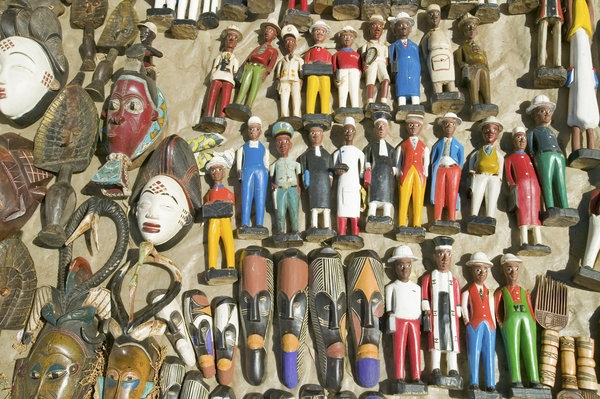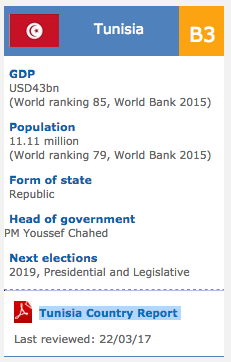Africa: Africa Art and Culture Profile
2012/08/09

The vast continent of Africa is so rich and diverse in it's culture with it not only changing from one country to another but within an individual country many different cultures can be found.Much of Africa's cultural activity centers on the family and the ethnic group. Art, music, and oral literature serve to reinforce existing religious and social patterns. The Westernized minority, influenced by European culture and Christianity, first rejected African traditional culture, but with the rise of African nationalism, a cultural revival occurred. The governments of most African nations foster national dance and music groups, museums, and to a lesser degree, artists and writers.
Africa was the birthplace of the human species between 8 million and 5 million years ago. Today, the vast majority of its inhabitants are of indigenous origin. People across the continent are remarkably diverse by just about any measure: They speak a vast number of different languages, practice hundreds of distinct religions, live in a variety of types of dwellings, and engage in a wide range of economic activities.
 Over the centuries, peoples from other parts of the world have migrated to Africa and settled there. Historically, Arabs have been the most numerous immigrants. Starting in the 7th century ad, they crossed into North Africa from the Middle East, bringing the religion of Islam with them. A later movement of Arabs into East and Central Africa occurred in the 19th century. Europeans first settled in Africa in the mid-17th century near the Cape of Good Hope, at the southern end of the continent. More Europeans immigrated during the subsequent colonial period, particularly to present-day South Africa, Zimbabwe, and Algeria. South Asians also arrived during colonial times. Their descendants, often referred to as Indians, are found largely in Uganda, Kenya, Tanzania, and South Africa.
Over the centuries, peoples from other parts of the world have migrated to Africa and settled there. Historically, Arabs have been the most numerous immigrants. Starting in the 7th century ad, they crossed into North Africa from the Middle East, bringing the religion of Islam with them. A later movement of Arabs into East and Central Africa occurred in the 19th century. Europeans first settled in Africa in the mid-17th century near the Cape of Good Hope, at the southern end of the continent. More Europeans immigrated during the subsequent colonial period, particularly to present-day South Africa, Zimbabwe, and Algeria. South Asians also arrived during colonial times. Their descendants, often referred to as Indians, are found largely in Uganda, Kenya, Tanzania, and South Africa.
TRIBES & PEOPLE GROUPS
There are many different people groups and tribes across the continent of Africa - with their culture varying from tribe to tribe.
- Afar :The Afar people live primarily in Ethiopia and the areas of Eritrea, Djibouti, and Somalia in the Horn of Africa.
- Anlo-Ewe :The Anlo-Ewe people are today in the southeastern corner of the Republic of Ghana. They settled here around 1474 after escaping from their past home of Notsie.
- Amhara :The Amhara are the politically and culturally dominant ethnic group of Ethiopia. They are located primarily in the central highland plateau of Ethiopia and comprise the major population element in the provinces of Begemder and Gojjam and in parts of Shoa and Wallo.
- Ashanti :The Ashanti live in central Ghana in western Africa approximately 300km. away from the coast. The Ashanti are a major ethnic group of the Akans in Ghana, a fairly new nation, barely more than 50 years old.
- Bakongo :The Bakongo people (aka. the Kongo) dwell along the Atlantic coast of Africa from Pointe-Noire, Congo (Brazzaville) to Luanda, Angola.
- Bambara :The Bambara area large Mande racial group located mostly in the country of Mali. They are the largest and most dominant group in that country.
- Bemba :The Bemba are located in the northeastern part of Zambia and are the largest ethnic group in the Northern Province of Zambia.
- Berber :Berbers have lived in Africa since the earliest recorded time. References date back to 3000 BC. There are many scattered tribes of Berber across Morocco, Algeria, Tunisia, Libya, and Egypt.
- Bobo :The Bobo peple have lived in western Burkina Faso and Mali for centuries. They are known for their masks which are worn with elaborate outfits for celebrations. Primarily agricultral people they also cultivate cotton which they use to trade with others.
- Bushmen/San :The 'Bushmen' are the oldest inhabitants of southern Africa, where they have lived for at least 20,000 years. Their home is in the vast expanse of the Kalahari desert.
- Chewa :The Chewa, also known as the Cewa or Chichewa is an African culture that has existed since the beginning of the first millennium, A.D. They are primarily located in Zambia, Zimbabwe, with the bulk of the population in Malawi.
- Dogon :The Dogon are a cliff-dwelling people who live in Southeastern Mali and Burkina Faso. Among the people groups in Africa they are unique in that they have kept and continued to develop their own culture even in the midst of Islamic invasions which have conquered and adapted many of the current people groups
- Fang :The Fang are especially known for their guardian figures which they attached to wooden boxes containing bones of the ancestors. The bones, by tradition, are said to contain the power of the dead person, in fact, the same amount of power that the person had while still alive.
- Fon :The Fon of Benin, originally called Dahomey until 1975, are from West Africa. The Fon are said to have originated in the area of Tado, a town in Tago, at approximately the same latitude as Abomey, Benin.
- Fulani :The Fulani people of West Africa are the largest nomadic group in the world, primarily nomadic herders and traders. Through their nomadic lifestyle, they established numerous trade routes in West Africa.
- Ibos :from Nigerian the Ibos live in villages that have anywhere from a few hundred to a few thousand people comprised of numerous extended families.
- Kikuyu (Gikuyu) :Having migrated to their current location about four centuries ago, the Kikuyu now make up Kenya’s largest ethnic group.
- Maasai :The Maasai, famous as herders and warriors, once dominated the plains of East Africa. Now however they are confined to a fraction of their former range
- Mandinka :The Mandinka are an ethnic group that live in West Africa, primarily Senegal, Gambia, and Guinea-Bissau, but some also live in Burkina Faso, Mali, and Cote d'Ivoire.
- Pygmies:There are many different 'Pygmy' peoples – for example, the Bambuti, the Batwa, the Bayaka and the Bagyeli ('Ba -' means 'people') – who live scattered over a huge area in central and western Africa, in the Democratic Republic of Congo (DRC), Congo (Brazzaville), Cameroon, Gabon, Central African Republic, Rwanda, Burundi and Uganda.
- Samburu: The Samburu are related to the Masai although they live just above the equator where the foothills of Mount Kenya merge into the northern desert and slightly south of Lake Turkana in the Rift Valley Province of Kenya.
- Senufo:The Senufo are a group of people living in northern Cote d'Ivoire and Mali. They are known as excellent farmers and are made up of a number of different groups who moved south to Mali and Cote d'Ivoire in the 15 and 16th centuries.
- Tuareg :The Tuareg people are predominently nomadic people of the sahara desert, mostly in the Northern reaches of Mali near Timbuktu and Kidal.
- Wolof:The Wolof are one of the largest people groups that inhabit modern-day Senegal. They live anywhere from the desert area of the Sahara to the rain forests. Traditionally many Wolof lived in small villages governed by an extended family unit but now most Wolof move to cities where they are able to get jobs.
- Yoruba:The Yoruba people live in Southwest Nigeria and Benin. They have developed a variety of different artistic forms including pottery, weaving, beadwork, metalwork, and mask making.
- Zulu:The Zulu are the largest ethnic group in South Africa. They are well known for their beautiful brightly colored beads and baskets as well as other small carvings.
ART & CRAFT
 When a person views African art, several themes seem to come up over and over again. These themes are representations of different things that are significant to African culture; and reveal the importance behind some of its most beautiful art.
When a person views African art, several themes seem to come up over and over again. These themes are representations of different things that are significant to African culture; and reveal the importance behind some of its most beautiful art.
The common themes are:
- A couple
- A woman and a child
- A male with a weapon or animal
- An outsider or "stranger"
Couples are most commonly shown as freestanding figures of relatively the same size and stature. They may be representative of ancestors, a married couple, twins, or community founders. This is representative of the importance placed on two as one. Most art of this type was developed for shrines or for positions of ceremonial honor. Sexual intimacy is rare in African carvings. This in that it is rare for men and women to display their affection publicly. The most common theme of the male and female couple is that of strength and honor; not love and intimacy.
 The mother and child couple is often representative of mother earth and the people as her children. African women will generally have a very strong desire for children as well however. The strong desire that a woman has to bear children further shows the strong mother child relationship that is a vital part of African culture
The mother and child couple is often representative of mother earth and the people as her children. African women will generally have a very strong desire for children as well however. The strong desire that a woman has to bear children further shows the strong mother child relationship that is a vital part of African culture
A male with a weapon or animal (commonly a horse) is commonly produced to show honor to departed ancestors. Animals are rarely sculpted for the purpose of showing the inward or outward beauty of the animal; but to give status to the person. Even today, many in Africa would consider the ownership of a horse to be of greater status than the ownership of an automobile. Showing a person with a horse would then be giving great honor to them. Sometimes people are shown with animals that are not really ridden; possibly even mythical. The purpose is to show the power given to one who rides such an animal; and the wealth that they must have.
As women achieve significance through their children, men will often be honored in warfare. The one who goes into battle must have physical, emotional and spiritual energy to survive and to conquer. Thus the emphasis on weapons and the spoils of war in many African works.
A final common representation in African art is that of the stranger. In Africa, a stranger is someone from a different country or tribe. They would usually not be welcomed; and the more distorted the portrayal of the stranger, the greater the gap that is normally symbolized. Sometimes strangers; especially white foreigners; are given a form of respect based on their relatively great weaponry and other powers.
Unfortunately, much of African art comes with no explanation of the meaning intended to be symbolized when it was created. When the meaning can be discerned, the deeper understanding gained and fuller appreciation of the cultural heritage can be obtained in a more meaningful and memorable way.
African Jewelry
Much of African culture places great emphasis on appearance and therefore on jewelry. African jewelry has been given tremendous attention for centuries. Own a useful and beautiful part of African culture now. Many pieces of African jewelry contain cowry shells. They are not only beautiful but also symbolic!
All jewelry shown is completely hand made, authentic, and completely African in origin and design. This jewelry will be noticed by everyone, will make tremendous conversation pieces. A huge selection of African Jewelry. You will find many things to create a new look; to complement your wardrobe; or to make the perfect gift.
Masks
Masks are representative of many different things in African history and culture. Ancestry is very important to the African people to show honor to their ancestors. They design the masks with elaborate hair and jewelry to show great wealth and honor so their ancestors will be pleased with them and bring blessings. Ancestors are greatly to be feared if they are angered, so the people are very careful to be honoring to them at all times. Masks are greatly revered in African culture
Many masks are used in ceremonies generally depicting deities, spirits of ancestors, mythological beings, good and or evil spirits, the dead, animal spirits, and other beings believed to have power over humanity.
MUSIC, MUSICAL INSTRUMENTS & DANCE
Music
All sub-Saharan traditions emphasize singing, because song is used as an avenue of communication. Because many African languages are "tone languages," in which pitch level determines meaning, the melodies and rhythms of songs generally follow the intonation contour and rhythms of the song texts. Melodies are usually organized within a scale of four, five, six, or seven tones. In group singing, some societies habitually sing in unison or in parallel octaves with sporadic fourths or fifths; others sing in two or three parts, using parallel thirds or fourths. Songs generally are in call-and-response form.
Modern Trends
With urbanization and the impact of Western culture, traditional music and dance, although still practiced, have decreased. New idioms have emerged, however, that combine African and Western elements; they include West African highlife (showing certain Caribbean traits), Congolese popular music (reflecting Latin American influence), and in southern Africa, sabasaba and kwella (both akin to U.S. swing and jive music). Evidence suggests that the needs of the church and other transplanted institutions may stimulate a new art music. Traditional music and dance face serious threat of decline. Because of their political and cultural importance, however, their preservation is given special attention in many countries
In the precolonial period, trade, wars, migrations, and religion stimulated interaction among sub-Saharan societies, encouraging them to borrow musical resources from one another, including peoples exposed to Islamic and Arabic culture, who had integrated some Arabic instruments and techniques into their traditional music. Some usages became concentrated in particular culture areas, whereas others were widely distributed. Thus, the savanna belt of West Africa forms a music area distinct from the Guinea Coast because of its virtuosic instrumental styles and the presence of a class of professional praise singers, or griots, in that area. Similarly, the music of East Africa is distinguished from that of Central Africa by a number of instruments, and from that of southern Africa, which traditionally emphasizes certain kinds of choral organization and complex forms of musical bows.
Musical Instruments
In selecting any instrument for music making or communication, consideration is given to its melodic and rhythmic capacities, its evocative or dramatic power, or its symbolic references. The tuning systems, scales, and rhythms associated with instruments tend to be more complex than those of songs. Rhythm patterns in one line or several simultaneous lines may interlock, overlap, or form polyrhythmic structures. Such structures may utilize cross-rhythms or alternate double and triple rhythms in linear patterns.
Drums are among the more popular African instruments, but other important percussion instruments include clap-sticks, bells, rattles, slit gongs, struck gourds and clay pots, stamping tubes, and xylophones. African stringed instruments include the musical bow, lute, lyre, harp, and zither. The flute, whistle, oboe, and trumpet are among the African wind instruments.
Dance
AFRICAN WEDDINGS
African Wedding Cultural Traditions
Ethiopia
Amhara people: most marriages are negotiated by the two families, with a civil ceremony sealing the contract. A priest may be present. Divorce is allowed and must also be negotiated. There is also a "temporary marriage," by oral contract before witnesses. The woman is paid housekeeper's wages, and is not eligible for inheritance, but children of the marriage are legally recognized and qualify for inheritance. Priests may marry but not eligible for divorce or remarriage.
Kenya
For the Samburu tribe marriage is a unique series of elaborate ritual. Great importance is given to the preparation of gifts by the bridegroom (two goatskins, two copper earrings, a container for milk, a sheep) and of gifts for the ceremony. The marriage is concluded when a bull enters a hut guarded by the bride's mother, and is killed.
Namibia
The Himba people of Namibia kidnap a bride before the ceremony and dress her in a leather marriage headdress. After the ceremony she is brought into the house where the family tells her what her responsibilities will be as the wife and then anoint her with butterfat from cows. This shows that she has been accepted into the family.
Niger
The Wodabee of Niger court their cousins for marriage. The male cousins wear powerful amulets which are supposed to heighten their attractiveness to the girl. If there are two cousins who desire the same girl the girl chooses the one she wishes and the other man is welcomed into the home of the couple, and if consent is given by the bride he may even share her bed!
African art constitutes one of the most diverse legacies on earth. Though many casual observers tend to generalize "traditional" African art, the continent is full of peoples, societies, and civilizations, each with a unique visual special culture. The definition also includes the art of the African diasporas, such as the art of African Americans. Despite this diversity, there are some unifying artistic themes when considering the totality of the visual culture from the continent of Africa.
Emphasis on the human figure: The human figure is the primary subject matter for most African art. In historical periods involving trade between Africa and Europe, the introduction of the human body into existing European pottery and other art forms can reliably be taken as evidence of contact with African cultures. For example in the fifteenth century Portugal traded with the Sapi culture near the Ivory Coast in West Africa, who created elaborate ivory saltcellars that were hybrids of African and European designs, most notably in the addition of the human figure (the human figure typically did not appear in Portuguese saltcellars).
Visual abstraction: African artworks tend to favor visual abstraction over naturalistic representation. This is because many African artworks, and generalize stylistic norms. Ancient Egyptian art, also usually thought of as naturalistically depictive, makes use of highly abstracted and regimented visual canons, especially in painting, as well as the use of different colors to represent the qualities and characteristics of an individual being depicted
Emphasis on sculpture: African artists tend to favor three-dimensional artworks over two-dimensional works. Even many African paintings or cloth works were meant to be experienced three-dimensionally. House paintings are often seen as a continuous design wrapped around a house, forcing the viewer to walk around the work to experience it fully; while decorated cloths are worn as decorative or ceremonial garments, transforming the wearer into a living sculpture.
Emphasis on performance art: An extension of the utilitarianism and three-dimensionality of traditional African art is the fact that much of it is crafted for use in performance contexts, rather than in static ones. For example, masks and costumes very often are used in communal, ceremonial contexts, where they are "danced." Most societies in Africa have names for their masks, but this single name incorporates not only the sculpture, but also the meanings of the mask, the dance associated with it, and the spirits that reside within. In African thought, the three cannot be differentiated.

Area of influence
African art has a long and surprisingly controversial history. Up until recently, the designation "African" was usually only bestowed on the arts of "Black Africa", the peoples living in Sub-Saharan Africa. The non-black peoples of North Africa, the blacks of the Horn of Africa, as well as the art of Ancient Egypt, generally were not included under the rubric of African art. Recently, however, there has been a movement among African art historians and other scholars to include the visual culture of these areas, since all the cultures that produced them, in fact, are located within the geographic boundaries of the African continent. The notion is that by including all African cultures and their visual culture in African art, laypersons will gain a greater understanding of the continent's cultural diversity. Since there was often a confluence of traditional African, Islamic and Mediterranean cultures, scholars have found that drawing distinct divisions between Muslim areas, ancient Egypt, the Mediterranean and indigenous black African societies makes little sense. Finally, the arts of the people of the African diaspora, prevalent in Brazil, the Caribbean and the southeastern United States, have also begun to be included in the study of African art.
History
The origins of African art lie long before recorded history. African rock art in the Sahara in Niger preserves 6000-year-old carvings. The earliest known sculptures are from the Nok culture of Nigeria, made around 500 BCE. Along with sub-Saharan Africa, the cultural arts of the western tribes, ancient Egyptian artifacts, and indigenous southern crafts also contributed greatly to African art. Often depicting the abundance of surrounding nature, the art was often abstract interpretations of animals, plant life, or natural designs and shapes.
More complex methods of producing art were developed in sub-Saharan Africa around the 10th century, some of the most notable advancements include the bronzework of Igbo Ukwu and the terracottas and metalworks of Ile Ife Bronze and brass castings, often ornamented with ivory and precious stones, became highly prestigious in much of West Africa, sometimes being limited to the work of court artisans and identified with royalty, as with the Benin Bronzes.
Influence on Western art
At the start of the twentieth century, artists like Picasso, Matisse, Vincent van Gogh, Paul Gauguin and Modigliani became aware of, and inspired by, African art. In a situation where the established avant garde was straining against the constraints imposed by serving the world of appearances, African Art demonstrated the power of supremely well organised forms; produced not only by responding to the faculty of sight, but also and often primarily, the faculty of imagination, emotion and mystical and religious experience. These artists saw in African Art a formal perfection and sophistication unified with phenomenal expressive power. The study of and response to African Art, by artists at the beginning of the twentieth century facilitated an explosion of interest in the abstraction, organisation and reorganisation of forms, and the exploration of emotional and psychological areas hitherto unseen in Western Art. By these means, the status of visual art was changed. Art ceased to be merely and primarily aesthetic, but became also a true medium for philosophic and intellectual discourse, and hence more truly and profoundly aesthetic than ever before.
Traditional art
Traditional art describes the most popular and studied forms of African art which are typically found in museum collections.
Wooden masks, which might either be human or animal or of mythical creatures, are one of the most commonly found forms of art in western Africa. In their original contexts, ceremonial masks are used for celebrations, initiations, crop harvesting, and war preparation. The masks are worn by a chosen or initiated dancer. During the mask ceremony the dancer goes into deep trance, and during this state of mind he "communicates" with his ancestors. The masks can be worn in three different ways: vertically covering the face: as helmets, encasing the entire head, and as crest, resting upon the head, which was commonly covered by material as part of the disguise. African masks often represent a spirit and it is strongly believed that the spirit of the ancestors possesses the wearer. Most African masks are made with wood, and can be decorated with: Ivory, animal hair, plant fibers (such as raffia), pigments (like kaolin), stones, and semi-precious gems also are included in the masks.
Statues, usually of wood or ivory, are often inlaid with cowrie shells, metal studs and nails. Decorative clothing is also commonplace and comprises another large part of African art. Among the most complex of African textiles is the colorful, strip-woven Kente cloth of Ghana. Boldly patterned mudcloth is another well known technique.
Contemporary African Art
Africa is home to a great and thriving contemporary art culture. This has been sadly understudied until recently, due to scholars' and art collectors' emphasis on traditional art. Notable modern artists include Marlene Dumas,William Kentridge, Kendell Geers, Yinka Shonibare, Zerihun Yetmgeta, Odhiambo Siangla, Olu Oguibe, Lubaina Himid, and Bill Bidjocka. Art biennials are held in Dakar, Senegal, and Johannesburg, South Africa. Many contemporary African artists are represented in museum collections, and their art may sell for high prices at art auctions. Despite this, many contemporary African artists tend to have difficult times finding a market for their work. Many contemporary African arts borrow heavily from traditional predecessors. Ironically, this emphasis on abstraction is seen by Westerners as an imitation of European and American cubist and totemic artists, such as Pablo Picasso, Amedeo Modigliani and Henri Matisse, who, in actuality were heavily influenced by traditional African art. This became the first step of evolution in Western art where people started becoming more open-minded and came out of their shell to explore the different aspects of art.
Comtemporary African Art was pioneered in the 1950's and 1960's in South Africa by artists like Irma Stern, Walter Battiss and through galleries like the Goodman Gallery in Johannesburg. More recently European galleries like the October Gallery in London and collectors like Jean Pigozzi and Gianni Baiocchi in Rome have helped expand the interest in the subject. Exhibitions like the African Pavillion at the 2007 Venice Biennale that showcased the Sindika Dokolo African Collection of Contemporary Art have gone a long way to countering many of the myths and prejudices that haunt Contemporary African Art. The appointment of Nigerian Okwui Enwezor as artistic director of Documenta 11 and his African centred vision of art jettisoned the careers of countless African artists into the international headlights
Botswana
In the northern part of Botswana, tribal women in the villages of Etsha and Gumare are noted for their skill at crafting baskets from Mokola Palm and local dyes. The baskets are generally woven into three types: large, lidded baskets used for storage large, open baskets for carrying objects on the head or for winnowing threshed grain, and smaller plates for winnowing pounded grain. The artistry of these baskets is being steadily enhanced through color use and improved designs as they are increasingly produced for commercial use.
The oldest evidence ancient paintings from both Botswana and South Africa. Depictions of hunting, both animal and human figures were made by the Khoisan (Kung San!/Bushmen dating before civilization over 20,000 years old within the Kalahari desert.
- Africa News
-
- ABIDJAN: Microfinance lenders gaining ground in Côte d’Ivoire
- TUNISIA: Tunisia harvests growth in agriculture sector
- DJIBOUTI CITY: Djibouti’s tourism ambitions garner overseas support
- BOTSWANA: Tripartite Free Trade Area plods along slowly in Africa
- MAPUTO CITY: Shaken but not stirred: Mozambique's banks look forward with optimism
- NAMIBIA: Namibia, SA mourns anti-apartheid icon
- Trending Articles
-
- INDIA: Tata Steel steers closer to Thyssenkrupp merger deal
- MOROCCO: Meditel to Become Part of Orange Before End of This Year.
- JAPAN: BestCities sees opportunity at 2017 Global Forum Tokyo
- INDIA: India-Malaysia Partnership In The Pink
- ISRAEL: Prime Minister Netanyahu - Israel Coming Back to Africa
- DJIBOUTI CITY: East Africa: World Bank Calls for Proper Urbanisation to Promote













